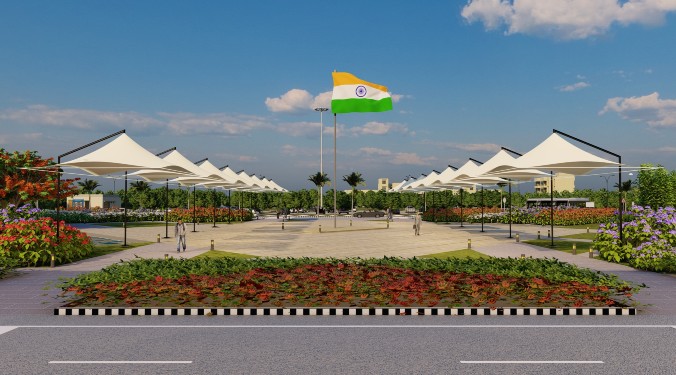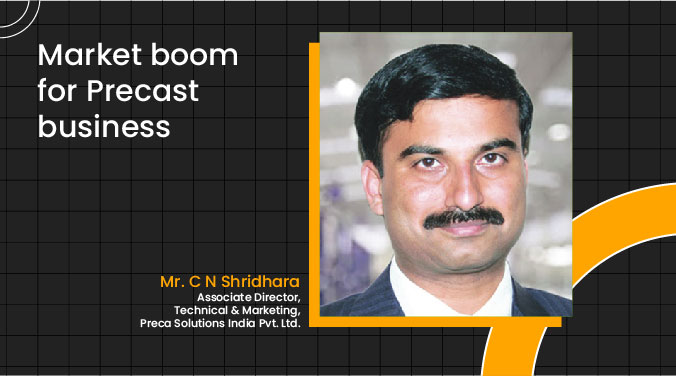The biggest differentiator between JSPL and other players in the construction sector is innovation and technology leadership. Ravi Uppal, MD and Group CEO, Jindal Steel and Power (JSPL)
JSPL is one among the few in the construction sector which strives to solve everyday construction challenges through innovative construction products and solutions. In an exclusive interview with ACE Update, Ravi Uppal shares how JSPL has come up with revolutionary and innovative techniques to make construction process easy and enjoyable.
India lacks an effective PPP model for the growth and development of infrastructure projects in India. What is your opinion on this?In order to remove the infrastructure deficiency in the country and develop world-class infrastructure in India, the investment requirements are mammoth, which cannot be met by the public sector alone due to fiscal constraints and mounting liabilities of the government. This would call for participation of private sector in coordination with the public sector to develop the public infrastructure facilities. The government realises that the infrastructure sector will be the harbinger of growth in India. The government is encouraging public-private partnership (PPP) across the sectors; the recently announced PPP model in railways is bound to mobilise resources and go a long way in reducing borrowings for the ministry.
However, the government needs to evolve an integrated infrastructure development plan which includes multiple models of ownership, viz. government, PPP and private investment to fast-track infrastructure development in India. The impediments to efficiency in PPP are role clarity on the part of partners and an effective regulator to oversee the progress of such projects.
What do you think will be the X-factor in changing the construction scenario in India?Infrastructure bottleneck has been a serious concern in India to robust pace of economic progression. Many advanced economies as well as developing countries have developed their physical infrastructure successfully through private participation. While private telecom service is a success story in India, private participation in infrastructure development remains dismal in the country.
A recent paper by PHD Chamber of Commerce &Industry and Crisil Ratings enumerates that India needs to invest Rs. 26 trillion over the next 5 years for all its infrastructure projects to give a fillip to the ‘Make in India’ project and to achieve a growth trajectory of 7-8 per cent. It is estimated that of the Rs. 26 trillion, nearly 80 per cent will be needed for power, roads and urban infrastructure. Though the government has announced a spending of Rs. 1 trillion in infrastructure, much more needs to be done if we intend to achieve the growth target and compete with nations like China.
Typically, infrastructure projects entail huge investments, are spread over larger time frames and therefore involve serious risks in project execution. The X-Factor in changing the construction scenario would be to augment investments for infrastructure development through innovative methods of financing and unbundling of risks. An increase in infrastructure spending, encouraging private participation and simplifying guidelines for financing of infrastructure projects will augur well for the construction industry in India.
How do you think that the increased flow of FDI in India will help the infrastructure and construction sector?The infrastructure and construction sector in India have been plagued by clearance issues between the centre and the states, delays with respect to land acquisition and limited project financing options.
Even the banks find it difficult to provide lon- term financing owing to concerns over asset-liability mismatch. To overcome the asset liability mismatch, they invariably restrict their finance to a maximum period of 12-15 years. This period should be increased to 25 years so as to enable easy funding of these projects.
An increased FDI inflow will attract investment in new areas and encourage overall development leading to the economic growth of the country. FDI inflows would augment infrastructure development and result in creation of the much needed affordable housing in the country and the development of smart cities. FDI will provide the much needed impetus, thereby, helping in overcoming the capital challenges in the infrastructure space.
What policy changes does the government need to draw more investments in the construction sector?The government has already relaxed FDI norms in the construction sector, reduced the built-up and capital area, and eased the exit norms. This will boost FDI in the construction sector and positively impact the realty segment in the country.
However, stable macroeconomic framework, sound regulatory structure, investor-friendly policies, sustainable project revenues, transparency and consistency of policies, effective regulation and liberalisation of labour laws, and good corporate governance would be imperatives to sustain enthusiasm in the infrastructure and construction sector in India.
How do you differentiate your company from other players in the construction sector?The biggest differentiator between JSPL and other players in the construction sector is innovation and technology leadership. The company strives to solve everyday construction through innovative construction products and solutions, driven by our passion for being at the apex of the ‘technology curve’. Our innovations save on time and manpower and have many environmental and cost benefits.
JSPL has come up with revolutionary and innovative techniques like the cut and bend welded mesh, Jindal global road stabiliser, speedfloor, light gauge structures, EPS panels, lightweight aggregates, fly ash bricks and pavers. These technological solutions reduce manual labour thus increasing productivity and quality. They have been effectively harnessed in various marquee projects across India.
We diligently follow the 3R model to reduce, reuse and recycle materials and utilise process by-products like fly ash and slag, thus reducing the negative footprint in our eco-system and contributing to a greener tomorrow.
A testimony of environment consciousness is Jindal Panther Cement which utilises slag form the blast furnace and fly ash from the power plant to produce fortified cement which caters to varying housing and construction requirement of large infrastructure projects, residential, commercial and industrial usage.
JSPL is also equipped with India’s first state-of-the-art plate mill that produces plates and coils of 5 metres and 3 metres width respectively, for the first time in the private sector. We also manufacture rails, angles and parallel flange beams that cater to the needs and requirements of the infrastructure industry. In fact, the company has pioneered manufacturing of 121-metre-long track rails and a facility to factory weld these rails in welded lengths of up to 480 metres. The world’s longest track rails are a testimony to JSPL’s manufacturing capabilities where continuous innovation is a practice rather than an exception.
9
Cookie Consent
We use cookies to personalize your experience. By continuing to visit this website you agree to our Terms & Conditions, Privacy Policy and Cookie Policy.









